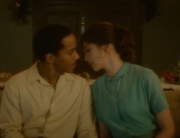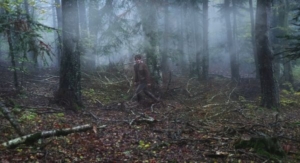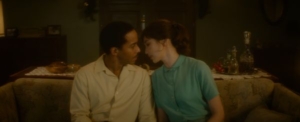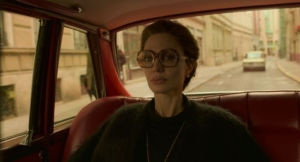Paul Vecchiali’s intriguing, elegantly crafted The Strangler is a hidden gem in the horror genre. It premiered in 1970 at Cannes, and has now been newly restored and getting its first U.S. theatrical release this fall. Perhaps by coincidence, or drawing inspiration from, the film was made in the wake of the Boston Strangler story which spawned thrillers throughout the 1960s, including an American film called The Strangler, The Boston Strangler, and No Way to Treat a Lady. Alfred Hitchcock’s Frenzy (1972), centered on a misanthropic “necktie murderer,” would be an interesting thriller stylistically to pair and contrast with this movie.
For a picture, dubbed as a French giallo about a serial killer, there is something bemusing about how lackadaisical and tensionless this film feels. The acts of violence—strangulation by lacy white, crocheted scarves—are played out reservedly, ballet-like with little force from the murderer and without much struggle from the victims. Instead, Vecchiali has made more of a psychological portrait probing inner torment and urban alienation.
A Paris market square is the main location where the killer—the handsome, yet unnervingly blank-faced Émile (Jacques Perrin)—works, selling produce. Strands of passersby, including potential victims, move in and out of the space as the dire news of the day is called out by paperboys. Sometimes onlookers stare directly at the camera, giving the film, which is otherwise carefully calibrated and choreographed, a loose, New Wave feel.
Émile’s victims are mostly lonely, depressed women. In his head, he is enacting mercy killings by putting them out of their misery. In a moody bar-set musical interlude, a wearied chanteuse (Jacqueline Danno) sings out a lonesome sea chanty, as women in Breton striped tops dance languidly and lay in hammocks, with the mostly wan patrons scattered about. The film’s most powerful scene is probably when a woman (Hélène Surgère), thinking him a scarf salesman, lets Émile into her flat (one of the many beautifully chic, warmly lit dwellings in the picture). Filmed from Émile’s point of view, and showing only the back of her head, she reveals, “A woman can’t live alone. It’s unbearable. I need someone to ask me how I spent my day.” Émile ultimately kills her in an embrace, gently wrapping the scarf around her neck.
Interestingly, the actions of a character credited as “The Jackal” (Paul Barge) come across as more abrasive and violent than the murders themselves. He follows Émile around and robs the women after they are killed—his actions jagged, haphazard, and completely devoid of any empathy. Also on Émile’s trail is Inspector Dangret (Julien Guiomar), a character that fits in perfectly with other impotent and ineffectual policemen of late-1960s and 1970s cinema.
When the cat and mouse ultimately meet for the first time, it’s a placid affair, subverting expectations of a dramatic showdown. Dangret attempts instead to psychologically manipulate Émile by establishing a sense of comfort with him. Whatever the puzzling strategy, more women are killed or are in jeopardy shortly thereafter. Dangret’s girlfriend, Anna (Eva Simonet), becomes involved too, setting herself up as a decoy. Like many here, her motivations are odd and ambivalent. Her ultimate resolution unclear.
Vecchiali, who died earlier this year, displays gifts with style, craft, mood, and characterization. His writing of dialogue and characters is dreamy, existential, as if The Strangler could be a spare, yet complicated novella. (Is it by coincidence that the title conjures Albert Camus’s famed French novella, The Stranger, a story of a murderer?) Hopefully, the broader release of The Strangler will fuel a reappreciation of Vecchiali’s mostly underseen body of work.

















Leave A Comment